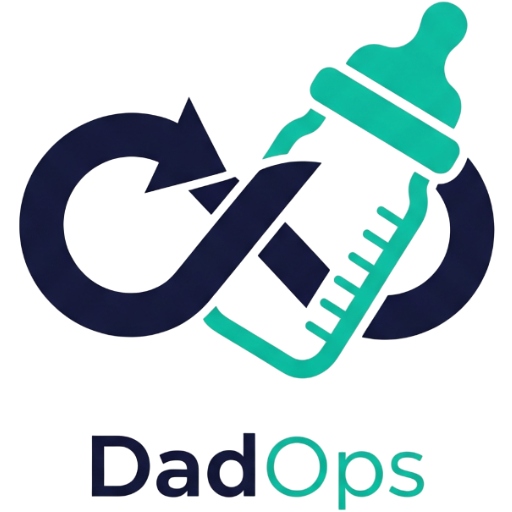Treat co-parenting like a software project with version control. Commit to open communication—it’s your project’s backbone, keeping everyone updated and ready to debug family glitches together. Branch out for individual perspectives without creating chaos, and resolve conflicts with empathy. Rebase your priorities to streamline duties and maintain a stable main branch. Celebrate successful merges to reinforce teamwork. Just like syncing a project, you’ll find harmony by staying updated and working together. Stick around to smooth out future family hiccups!
Key Points
- Use open communication to prevent misunderstandings, akin to regular updates in version control.
- Address conflicts directly and empathetically to maintain harmony, similar to resolving merge conflicts.
- Implement shared calendars for transparency, reducing surprises and promoting collaboration.
- Document effective strategies and successes for future reference, like maintaining a changelog.
- Prioritize shared goals and adjust responsibilities as needed, ensuring alignment and balance.
Commit to Open Communication

Just like any successful software project starts with a solid commit, so does effective co-parenting begin with open communication. You’re not merging code here, but parenting disagreements can feel like it.
Effective co-parenting requires open communication—similar to a successful software project starting with a solid commit.
Here’s some co-parenting tips to navigate the chaos:
- Update Logs Regularly: Keep each other informed, just like you’d with a changelog. It prevents surprises.
- Resolve Conflicts Early: Nip issues in the bud before they become merge conflicts. Relationship advice after baby is key here. Setting the right parameters is essential, much like in a nutritional plan, to maintain balance and prevent issues from escalating.
- Commit to Honesty: Be transparent about your needs and concerns. Trust isn’t built on hidden bugs.
Effective communication is the cornerstone of strong relationships, and incorporating active listening into your co-parenting strategy can enhance understanding and cooperation.
Communication is your main branch—keep it clean!
Just as Healthy Deployable is crucial in software projects, ensuring clarity and dependability in co-parenting helps maintain a robust and harmonious environment for all involved.
Branch Out for Individual Perspectives
Ever wonder how software teams juggle different ideas without descending into chaos? They branch out, and so can you. In co-parenting, creating your own “branch” gives you room for individual perspectives. Here’s how:
- Express Yourself: Share your thoughts without fear. Your perspective matters.
- Experiment Freely: Test new parenting techniques. Learn from trials. Bonding protocols play a crucial role in ensuring seamless communication, much like how maintaining open dialogue can strengthen co-parenting efforts.
- Stay Connected: Keep communication lines open. It prevents drifting apart. Consider implementing efficient diaper storage solutions to keep shared spaces organized and accessible, reducing stress and potential conflicts over clutter.
- Document Changes: Note what works, and what doesn’t. It’s like a personal parenting log.
- Remember the Importance of recognizing and responding to a baby’s hunger cues: Just like in feeding, understanding and addressing immediate needs is crucial for a harmonious co-parenting experience.
Resolve Merge Conflicts With Empathy

You’ve branched out, explored new ideas, and now it’s time to bring those branches back together. Merge conflicts with your co-parent can feel like error messages in your parenting code. Approach them with empathy, not ego. Remember, the goal isn’t to prove who’s right, but to support your little one’s main branch. Just as you would recognize signs that require professional medical evaluation for your baby, being attuned to your co-parenting dynamics is crucial. A valuable resource like a Newborn Quickstart Guide can help alleviate the stress and uncertainty that often accompany the arrival of a newborn. It’s important to create an environment where open communication and understanding thrive, to support both your partner’s and your child’s well-being. Consider this table:
| Situation | Empathetic Response |
|---|---|
| Bedtime Battle | “I understand you’re tired too.” |
| Homework Chaos | “Let’s brainstorm a strategy together.” |
| Weekend Plans | “How do you feel about this option?” |
| Discipline Dispute | “What’s your perspective on this?” |
Rebase Your Priorities
When life’s parenting demands start to feel like an overloaded code repository, it might be time to rebase your priorities. Rebalancing these can streamline your co-parenting duties and keep you sane.
Here’s a quick list to help you rebase efficiently:
- Identify Core Tasks: Like the main branch of a project, what’s non-negotiable in your parenting duties? Focus on these first.
- Eliminate Redundant Tasks: Drop tasks that don’t add value. They’re just noise.
- Delegate When Possible: Hand off tasks to others—you’re not alone in this. Communicating effectively with your co-parent is essential to ensure tasks are managed smoothly, much like staying in touch with healthcare providers during pregnancy.
- Regularly Review: Just like code, priorities need updating. Make it a habit.
It’s essential to have strategic planning in place to address potential challenges, ensuring a seamless transition in co-parenting roles. It’s crucial to recognize the symptoms of mental health issues like postpartum depression in partners and dads, as this awareness can further enhance a supportive co-parenting environment.
Rediscover harmony, one commit at a time!
Maintain a Stable Main Branch

Picture your shared parenting goals as the main branch in version control, Dad. To keep it stable, you’ve got to sync up regularly, not just when there’s a “merge conflict” brewing. Chat openly about what you both want for the kids, and remember, a little humor can go a long way in smoothing out any rough patches. Consistent communication, much like in building secure attachments, is key to maintaining a healthy co-parenting relationship. Embrace proactive fatherhood by focusing on emotional intelligence and fostering open communication, which are essential for nurturing strong relationships with your children. Just like in alternative methods for Cesarean section delivery, exploring different approaches and preparing thoroughly can lead to positive outcomes in both parenting and childbirth experiences.
Prioritize Shared Parenting Goals
Just like any well-oiled version control system, co-parenting thrives when you prioritize shared goals, keeping the main branch stable and drama-free. Aligning your parenting priorities ensures smoother merges and fewer conflicts.
Here’s how to keep your joint project on track:
- Define Key Goals: Agree on what’s essential—be it education, health, or bedtime routines. You don’t want your parenting repo cluttered with unnecessary feature branches.
- Stay Consistent: Keep those goals clear. Kids need consistency like a repository needs regular commits. Balancing work and family is crucial to ensure that both parents can contribute effectively to these goals.
- Adapt When Necessary: Life’s unpredictable. Be ready to pivot without losing sight of core objectives. Just as prenatal visits are essential for monitoring the health of both mother and baby, adapting in co-parenting helps ensure the well-being of your child.
- Celebrate Wins Together: Acknowledge your collective successes, no matter how small.
- Strengthen your relationship by having regular check-ins and open dialogue to proactively address any issues that may arise.
Communicate Regularly and Openly
Even though co-parenting isn’t quite like coding, it still benefits from regular and open communication to maintain a stable main branch. Think of it as your daily “git pull” to stay updated. Here’s your checklist:
- Weekly Sync-Ups: Like a stand-up meeting, share updates on the kids’ schedules and any changes.
- Honest Debugging: Address issues directly, not through the grapevine. No one likes surprise merge conflicts!
- Version Logs: Use a shared calendar or app to log important events and decisions.
- Feedback Loop: Encourage input and adapt. Remember, in co-parenting, flexibility is key to success. Ensure that your shared environment is safe for everyone involved by discussing essential guidance on household safety measures.
Additionally, building a supportive network helps dads to manage stress and foster effective co-parenting relationships by sharing experiences and solutions with others.
Celebrate Successful Merges
You’ve finally managed a successful merge, and it’s time to high-five your co-parent with pride! Recognize those collaborative wins—like when you both agreed on bedtime rules without a single argument.
Acknowledge the shared achievements and appreciate how unified goals keep your parenting strategy running smoother than a well-oiled codebase.
Recognize Collaborative Wins
When you and your co-parent masterfully navigate the rocky seas of disagreement and emerge with a solution everyone can sail on, it’s time to celebrate those successful merges.
Recognizing collaborative wins isn’t just about the end result; it’s about the teamwork that got you there. Here’s how to savor the victory:
- High-Five the Process: Appreciate the effort, not just the outcome. It’s the journey, not just the destination, right?
- Retrospective Cheers: Reflect on what worked. Consider it a post-merge review.
- Document the Success: Note what strategies clicked. It’s your parenting playbook.
- Toast the Teamwork: Remember, you’re both captains of this ship.
Acknowledge Shared Achievements
Alright, Captain Dad, time to set sail on the seas of shared achievements. Think of those moments when both parental ships merge without a hitch, creating a masterpiece of family harmony.
- Celebrate the Wins: Did bedtime go smoothly? High five! You both deserve a victory lap around the playroom.
- Share the Glory: Acknowledge each other’s efforts. It’s like giving credit for a bug fix in a codebase.
- Create a Highlight Reel: Keep a mental list of these triumphs. It’s your treasure map, guiding you through stormy seas.
Appreciate Unified Goals
Even in the world of co-parenting, achieving unified goals is like nailing that perfect merge in version control—it’s not just about avoiding chaos, but about crafting something beautiful together.
You know the feeling when everything aligns perfectly? Celebrate those moments! Here’s how to appreciate your successful merges:
- Reflect Together: Take a moment to chat about what worked well. It’s like reviewing a clean code commit.
- Celebrate Small Wins: Every seamless bedtime or school pickup is a victory.
- Learn & Improve: Use what worked to tackle future challenges.
- Express Gratitude: A simple “Thanks for being an awesome co-parent” goes a long way.
Frequently Asked Questions
How Do I Handle a Sudden Change in Parenting Schedules?
You adapt swiftly. Communicate with your co-parent to update the plan. Prioritize flexibility and keep the child’s best interests at heart. Document changes to guarantee clarity and avoid misunderstandings down the line. You’ve got this!
What if Our Parenting Styles Clash Over Discipline Methods?
You’ve got to communicate and compromise. Discuss your discipline methods and find common ground. Prioritize consistency for your child. Remember, it’s okay to adapt and merge different approaches as long as it benefits your child’s development.
How Can I Involve Extended Family Without Causing Conflict?
You can involve extended family by setting clear boundaries and communicating your parenting goals. Encourage open dialogue, but make certain they understand your main objectives. This helps prevent misunderstandings and keeps everyone on the same parenting page.
What Strategies Exist for Managing Financial Disagreements?
You can create a shared budget document, regularly review expenses together, and set clear expectations. Communicate openly about priorities and compromises. Always focus on the big picture: your child’s needs and a harmonious co-parenting relationship.
How Do I Address Disagreements on Educational Choices for Our Child?
When facing disagreements on educational choices, prioritize open communication and compromise. Listen to each other’s perspectives, find common goals, and adapt plans as needed. Guarantee decisions align with your child’s best interests, fostering a supportive environment.




